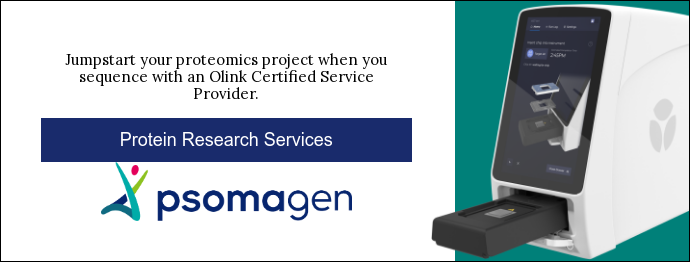Biomedical research has changed our understanding of human health and disease. Proteomics, a branch of science that focuses on the study of proteins, is a powerful tool for biomedicine. Proteins play pivotal roles in cellular processes, signaling pathways, and disease mechanisms.
In this blog post, we explore the importance of proteomics in biomedical research. This summary highlights its applications, technological advancements, and potential for groundbreaking discoveries.
What Is Proteomics?
Proteomics involves the comprehensive study of proteins, including their identification, characterization, quantification, and functional analysis. It focuses on dynamic, complex interactions within the proteome (the complete set of proteins present in a cell, tissue, or organism).
Protein research provides a distinct advantage over other approaches by focusing on biological interactions. Genomics, for example, studies the entire DNA sequence of an organism. It does not hone in on molecular mechanisms. By unraveling the proteome, researchers gain insights into cellular processes, protein functions, and disease mechanisms at a molecular level.
Applications in Disease Research
Proteomics has emerged as an important tool for studying diseases, providing crucial insights into their underlying molecular mechanisms. By comparing the proteomes of healthy and diseased tissues, researchers can identify disease-specific biomarkers. This aids in early detection, diagnosis, and prognosis.
Personalized treatment options
In cancer research, the discovery of specific protein signatures has enabled better tumor classification and personalized treatment strategies. For example, proteotyping of 96 breast cancer tumor cells revealed patterns of variance in tumors within the same subtype. These Swiss researchers identified three proteins strongly related to proteotypic classification. Additional information about a patient's specific tumor cells opens the door to more personalized treatment.
Drug actions & interactions
Furthermore, proteomics is used in understanding drug action and resistance. Researchers can analyze how drugs interact with proteins and how these interactions influence cellular pathways. This knowledge is essential for developing more effective and targeted therapies.
In many studies, endogenous proteins are analyzed to discover their responses to stimulation and how those changes could be used for disease treatment. For example, cytochrome P450 enzymes metabolize many molecules in the body. Using chemical proteomics, researchers are able to induce changes in P450 behaviors in vivo. Understanding how P450 interacts with small molecules will help to characterize the enzyme family and elucidate how many medications are processed in the body.
Identifying drug targets
Drug target research tends to focus on well-classified parts of the proteome (about 10%). Proteomics opens the door to novel discoveries in less-mapped areas. By identifying new drug targets, researchers are able to develop novel therapeutic interventions.
For example, lung cancer is one of the deadliest cancers in the western world. A 2020 proteomic study of non-small cell lung cancer found common mutations and overexpression of proteins in 84 cell lines. These protein biomarkers indicate that a patient could be receptive to novel signaling pathway suppressing drugs.
Technological Advancements in Proteomics
Proteomics has witnessed tremendous technological advancements, enabling researchers to delve deeper into the proteome with greater precision and sensitivity. Mass spectrometry (MS), a key technology in proteomics, has become more accurate and with higher throughput. Using MS, researchers can identify and quantify thousands of proteins in a single experiment.
MS is still a core tool for proteomics. However, a new generation of multiplexed technologies has gained traction with heightened sensitivity and augmented multiplexing abilities. These technologies complement MS and allow for the detection of hundreds to thousands of proteins. They require minimal sample volume and provide an expanded dynamic range.
For example, Olink’s Proximity Extension Assay can measure up to 3000 proteins with as little as 10µl of sample. This technology preserves data quality with improved throughput and multiplexing.
These new multiplexed methods offer a holistic view of biochemically complex environments. This includes mechanisms involved in pathogenesis and treatment response, with fewer constraints created by time, cost, and sample volume.
Multi-omics Integration
Proteomics is increasingly integrating with other omics technologies, such as genomics, transcriptomics, and metabolomics. By combining data from multiple omics layers, researchers gain a more comprehensive understanding of complex biological systems. This integrative approach has the potential to unravel intricate molecular networks, identify new biomarkers, and reveal novel therapeutic targets.
New capabilities in single-cell proteomics allow for the characterization of protein expression at the individual cell level. This technology offers insights into cellular heterogeneity, a valuable perspective in researching cancer and other diseases. It also enables the study of complex biological processes, such as development, tissue regeneration, and immune responses. Single-cell provides unprecedented resolution for these studies.
Challenges and Future Perspectives
While proteomics has made significant contributions to biomedical research, several challenges remain. One significant challenge lies in the vast complexity of the proteome. It contains numerous protein isoforms, post-translational modifications, and dynamic interactions. Analyzing such complexity requires advanced technologies, data integration, and computational tools.
Additionally, proteomics must continue to overcome limitations in quantification, improving throughput (whole proteome ~25,000), and cost to enable high-resolution and large-scale studies. Development of new technologies will make it possible to develop more protein-based tools for medical research.
The future of proteomics is bright. New methods are enhancing our ability to unravel intricate protein networks and identify disease biomarkers. Furthermore, emerging techniques like single-cell and spatial proteomics offer exciting opportunities for deeper insights into cellular processes and tissue organization. These new technologies are paving the way for personalized medicine and therapeutic interventions.
Protein Biomarker Research at Psomagen
Proteomic technology offers a new way of understanding disease states. It offers additional insights in drug discovery, personalized medicine, and prognostics. The field is ushering in a new era of biomedical discovery.
To support researchers across all disciplines, Psomagen has implemented Olink® Proximity Extension Assay (PEA) technology in its facilities. Olink’s PEA technology allows the simultaneous quantitation, detection, and profiling of hundreds of proteins. This technology has the added benefits of high sensitivity, specificity, and low volume sample input.



